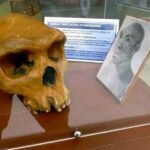Common Eland
( southern eland or eland antelope )
- Taurotragus oryx
- IUCN Status: Least Concern
- Trend: decreasing

- Kingdom: Animalia
- Phylum: Chordata
- Class: Mammalia
- Order: Artiodactyla
- Family: Bovidae
- Subfamily: Bovinae
- Genus: Taurotragus
Share:
General Information
Common Eland are the largest of the Zambian antelopes and are the second largest antelope in the world. Even with their size, they are capable of jumping very high from a stationary position to about 2m high. They can be very graceful, timid and have been tamed in some countries for meat and other products.
Description
Common elands are spiral-horned antelopes with both male and females having horns. Apart from a rough mane, the coat is smooth. Females have a tan coat, while the coats of males are darker, with a bluish-grey tinge. Bulls may also have a series of vertical white stripes on their sides. As males age, their coat becomes more grey. Males also have dense fur on their foreheads and a large dewlap on their throats.- Shoulder height: 150–183 cm
- Length: 240–345 cm
- Weight: up to 1000 kg
- Lifespan: up to25 yrs
Ecology & Behaviour
Elands feed during the night in hot weather and sleep for long periods during the day. Most of their water is obtained from their food which is mostly browsing forbs, trees, shrubs, grasses, seeds and tubers, though they will drink water when available. In southern Africa common elands will often associate with herds of zebras, roan antelopes and oryxes. Some of their main predators include lions, African wild dogs, cheetahs and spotted hyenas. Juvenile elands are more vulnerable than adults to their predators.
Conservation
It is classified as of Least Concern by the International Union for Conservation of Nature (IUCN) Red list
Distribution & Habitat
Common elands live on the open plains of southern Africa and along the foothills of the great southern African plateau. They are widespread across southern Africa, central and east Africa.
Interaction with Humans
The common eland is used by humans for leather, meat and milk, and has been domesticated in many areas. Eland milk contains more butterfat than cow milk, and can keep longer without pasteurising
No donation to this project yet.
| M | T | W | T | F | S | S |
|---|---|---|---|---|---|---|
| 1 | 2 | 3 | 4 | 5 | 6 | |
| 7 | 8 | 9 | 10 | 11 | 12 | 13 |
| 14 | 15 | 16 | 17 | 18 | 19 | 20 |
| 21 | 22 | 23 | 24 | 25 | 26 | 27 |
| 28 | 29 | 30 | 31 | |||


